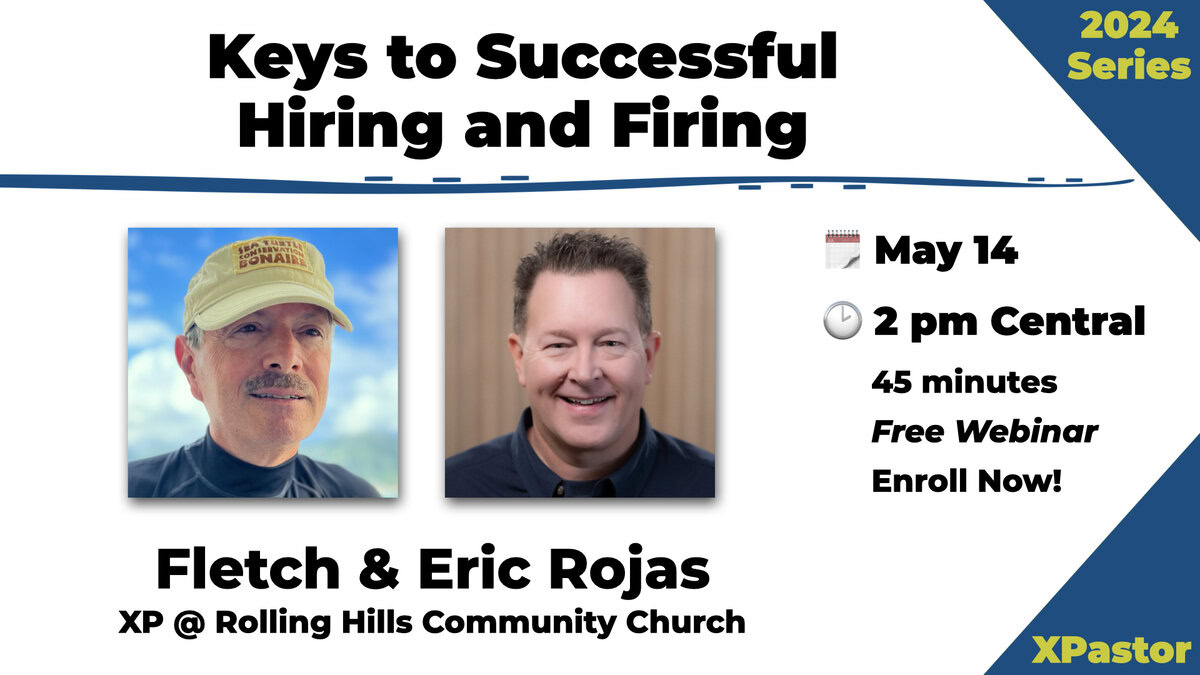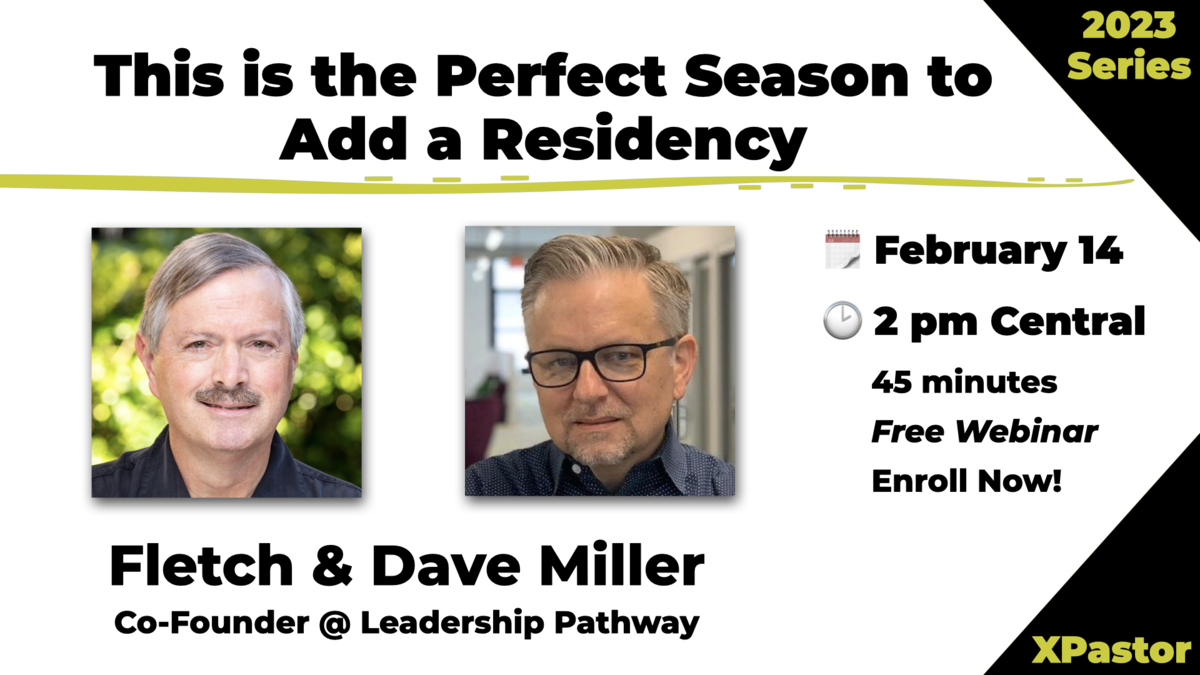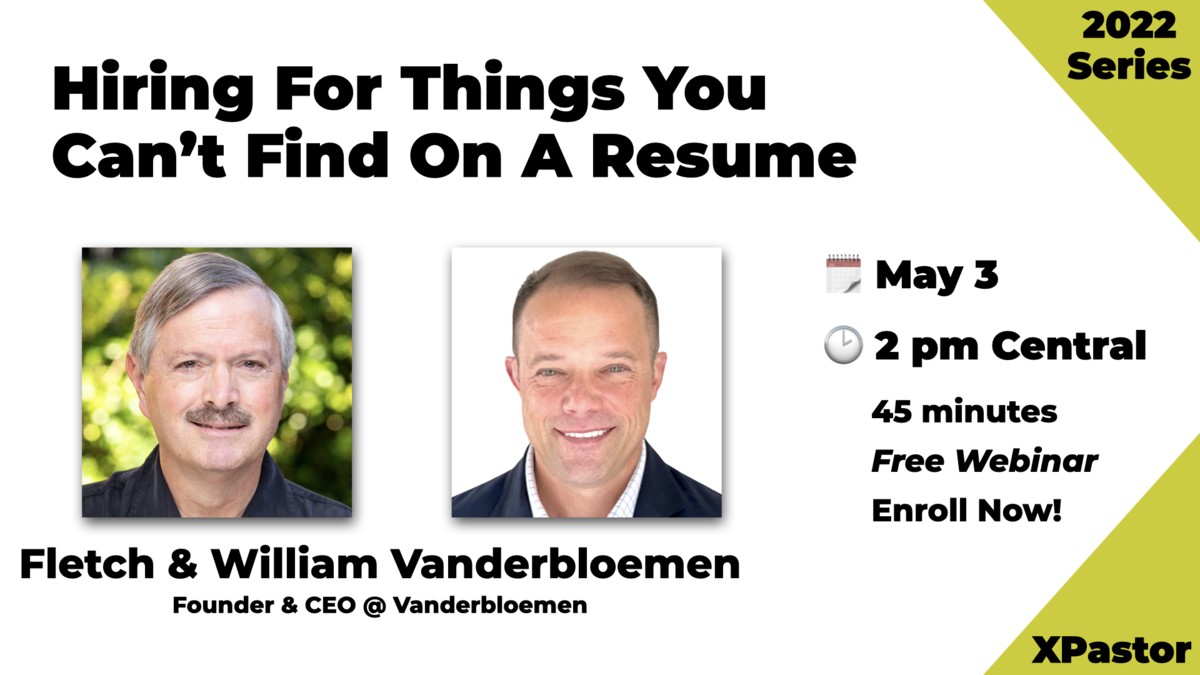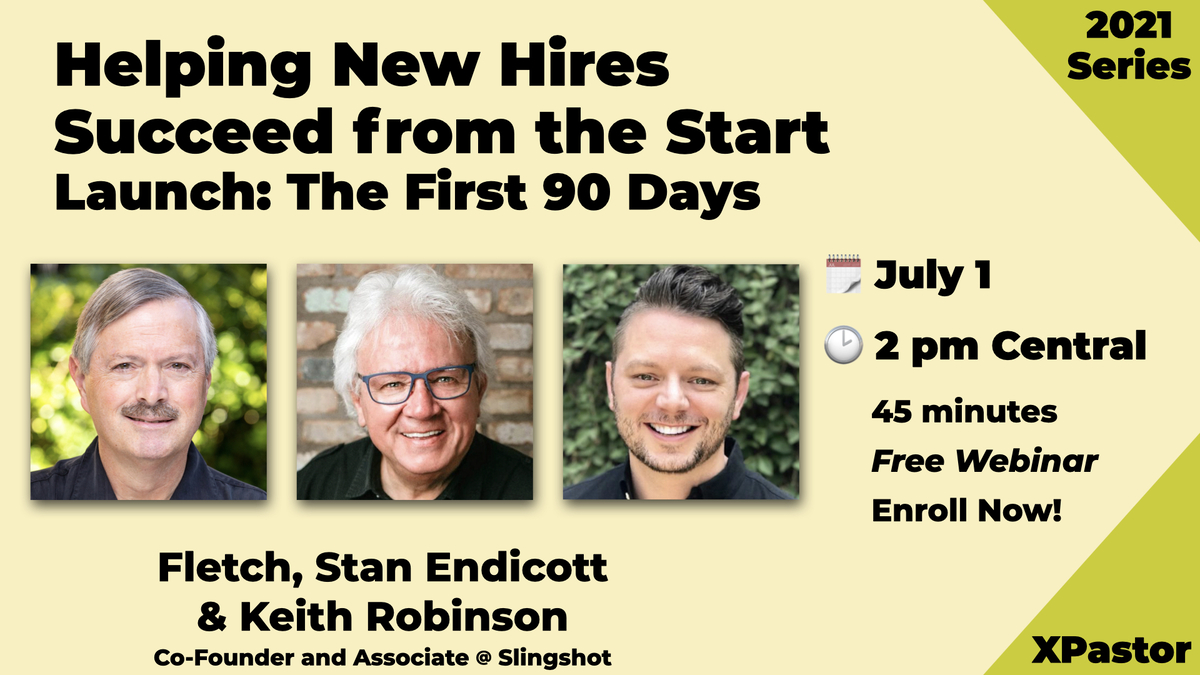At the start of the XPastor Online Course on Operations 101–Staffing, I had been in my current role as Director of Ministry Operations at Calvary Bible Church for fourteen months. Calvary is a multi-campus church in Boulder and Erie, Colorado (we’ve been in Boulder for nearly 125 years, and launched our Erie campus in 2006). My role includes oversight over Communication, Technology, Finance, Facilities and Human Resources—a perfect fit for the XPastor Level One Course. Prior to serving as the Director of Ministry Operations, I had been a member of our Senior Leadership Team for a year as the Director of Communication and Technology, a role which I occupied for about four years. Even though I’ve been on staff at Calvary for nearly ten years, the past two years have turned my focus to the executive leadership of our organization, specifically focusing on a higher level of direction in the areas of personnel and staffing.
While I’d had the opportunity to lead individuals, teams and departments prior to my current position, I quickly learned how leading staff and personnel from an organizational perspective is a much different task, which requires proficiency and experience. I was now dealing with macro-level staffing decisions like compensation, benefits and human resources policy. In my shift from micro to macro-level staff leadership, I discovered that I now oversaw several areas in which I had knowledge gaps. I needed to fill those gaps to be more effective in my position. This first online course helped fill in several of my knowledge gaps in the area of personnel and staffing. It was particularly helpful and enlightening to hear from several accomplished leaders in a variety of ministry environments.
Additionally, the challenge in an executive level position with a diverse set of responsibilities is balancing the tension between breadth and depth. Each day, I have the opportunity to give my attention to a number of different details; in order to be most effective, I have to choose which of those details will get my attention. If I give my attention to too many details in one particular area, I’m unable to stay focused on the wider perspective of my role. If I go too deep in one area of focus, I get stretched thin in another. Because of my knowledge gaps in organizational staffing, I wasn’t always sure in what personnel areas I should give my focused attention. The XPastor Staffing Course has helped me learn from a number of respected and experienced leaders in what personnel areas I should give my attention, specifically including our preferred hiring path.
Any organizational system ought to be consistent and simple. Overly complex and unpredictable processes are inefficient and regularly lead to confusion and frustration. Alternatively, consistency and simplicity are foundations for reproducibility. Through this course and its accompanying reading, I’ve learned how critical an established hiring path is for a successful organization. As Dr. Bill Egner said in Class Two on Hiring, “Churches that hire well have a well-defined hiring process that they execute rigorously.”
Currently, our hiring process is less than well-defined, and, as such, is often left up to the hiring manager to handle on his or her own. This unpredictable process could, therefore, lead to a bad hire, which would be incredibly costly to the organization. This is a vulnerability for us, as well as an opportunity to create a consistent and simple process for hiring which is reproducible across all levels of our organization.
While I believe we can strive for simplicity in this process, I don’t mean to communicate that a defined hiring process should be easy. I’ve learned through this course that an effective hiring process requires a strong commitment to seeing the process through, and not simply making a hire to fill a need with a candidate who almost meets the hiring criteria. I do mean that the process should be clear, reproducible and ultimately helpful to the hiring manager. While it may require more work than the current laissez-faire process we’re operating under, it should result in more effective hirings and longevity amongst our staff. Secondarily, it should clarify our expectations for new hires, making the on-boarding process for those staff members clear and inspiring as they join our team.
If we strive for consistency in our process, we can ensure that new staff enter our organization on equal footing. They each understand who we are, what we expect and how they can be successful. By virtue of having navigated a rigorous hiring process, they’ll have a deeper respect for, and understanding of, our organizational values.
When I was in college, I was a member of Alpha Gamma Omega, a Christ-centered fraternity at the University of Colorado at Boulder. Like most collegiate fraternities, ours required a strict and stringent process prior to becoming a member. After you were asked to join our house, through a bid, you went through a semester long process called pledging. Even though you attended fraternity meetings and events, you weren’t yet a member. You had an entire semester to learn about the fraternity, its history, its values. There were assignments, Biblical book studies (probably unique to our house), and several other prerequisites you had to complete. At the end of your pledge semester, you went through a weekend long process called initiation. It wasn’t until you successfully finished that process, which included many rigorous requirements, that you were allowed to become an active member of the house. In the end, some pledges didn’t finish the process and were weeded out. It all served to build unity amongst the membership, and it did so successfully.
While certainly different than a hiring process, it has many similarities. The pledge process works to identify those individuals who are committed to the cause of our fraternity and eliminate those who aren’t. It allows all new members to have a consistent, shared experience upon their becoming actives. You are able to relate to older members of the house because they have been through the same rigorous process. They may have more experience than you, but you feel prepared to interact and lead alongside them because you entered the fraternity in the same way. Although my pledge process was nearly fifteen years ago, I can speak with a current active member of AGO today and relate to their process of joining the house. I also know they’ll hold the same values and passion for the organization that I do, because the process has been consistent from my joining until now. Interestingly, many secular fraternities got their start as Christian organizations, and their lack of rigorous commitment to a process has resulted in their organizational drift from their Christ-centered heritage.
Through the XPastor Course on Staffing, I’ve learned that one of the most important areas which I can give my focused attention to is to develop a more thorough hiring process. A clarified pathway for hiring should result in stronger unity amongst our team, a higher commitment to results and increased longevity amongst our team. I’m grateful for the opportunity to bring clarity to an area which needs my attention for the improvement of our organization.











